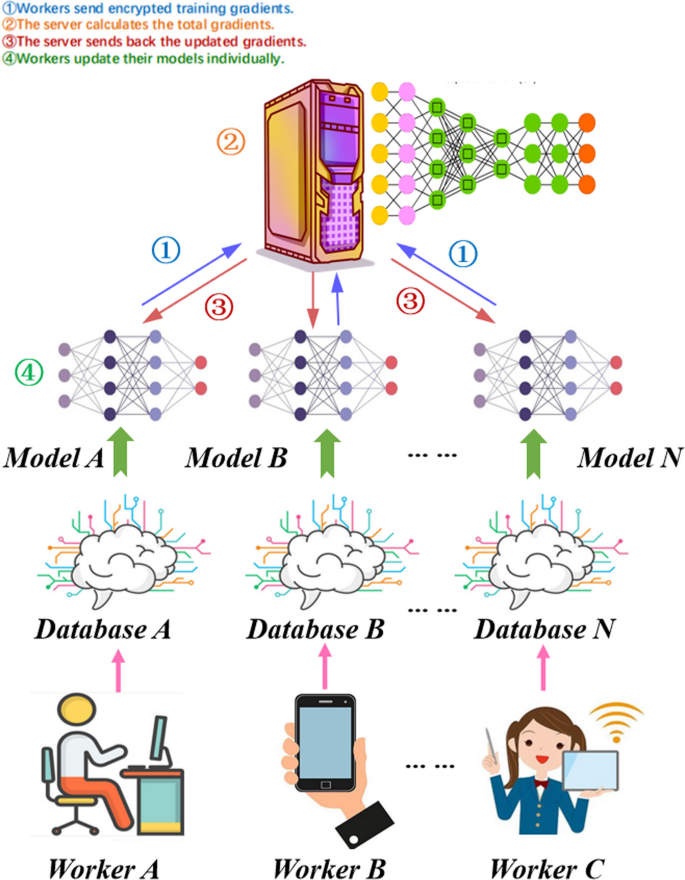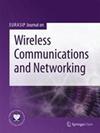基于联邦学习的无线网络智能交互屏幕优化设计与应用研究
IF 1.9
4区 计算机科学
Q2 ENGINEERING, ELECTRICAL & ELECTRONIC
EURASIP Journal on Wireless Communications and Networking
Pub Date : 2023-10-18
DOI:10.1186/s13638-023-02315-7
引用次数: 0
摘要
无限网络和信息技术的飞速发展,促进了智能交互设备的广泛部署和快速增长。但与此同时,触摸交互技术也面临着精度不足等诸多挑战。本研究将联邦学习与LayerGesture技术相结合,优化设计了具有更高交互精度的触摸交互系统,并将其应用于实践。分析结果表明,随着联邦模型迭代次数的增加,人机识别交互的精度和所含信息量增加,精度曲线在2800次左右达到稳定,处于最佳交互自适应状态。此时,损失函数也逐渐减小,损失因子趋于0,验证了优化模型的稳定性。根据参与者的交互经验和实验结果,优化后的联邦学习模型LayerGesture技术的平均正确率为90.4%,平均选择时间最低,而LayerGesture在屏幕边缘交互区域的平均选择时间为2510 ms,平均正确率为93.60%,优于Shift技术。此外,主观调查结果显示,更多的参与者喜欢优化的LayerGesture技术。综上所述,本文的联合学习算法有助于提高智能交互系统的识别有效性和效率。本文章由计算机程序翻译,如有差异,请以英文原文为准。

Optimized design and application research of smart interactive screen for wireless networks based on federated learning
Abstract The rapid development of infinite networks and information technology has promoted the wide deployment and rapid growth of intelligent interactive devices. However, at the same time, touch interaction technology also faces many challenges such as lack of precision. This study combines federated learning with LayerGesture technology to optimize and design a touch interaction system with higher interaction accuracy and applies it to practice. The analysis results show that with the increase in the number of iterations of the federated model, the accuracy of the human–computer recognition interaction and the amount of information contained in it increases, and the accuracy curve reaches stability at about 2800 times and is at the optimal interaction adaptation. At this point, the loss function also decreases gradually, while the loss factor tends to 0, which verifies the stability of the optimized model. According to the participants’ interaction experience and experimental results, the optimized LayerGesture technique of the federated learning model has an average correctness rate of 90.4% and the lowest average selection time, while the average selection time of LayerGesture in the interaction area at the edge of the screen is 2510 ms and the average correctness rate is 93.60%, which is better than the Shift technique. In addition, the subjective survey results indicated that more participants favored the optimized LayerGesture technique. In summary, this paper’s joint learning algorithm contributes to the recognition effectiveness and efficiency of intelligent interactive systems.
求助全文
通过发布文献求助,成功后即可免费获取论文全文。
去求助
来源期刊
CiteScore
7.70
自引率
3.80%
发文量
109
审稿时长
8.0 months
期刊介绍:
The overall aim of the EURASIP Journal on Wireless Communications and Networking (EURASIP JWCN) is to bring together science and applications of wireless communications and networking technologies with emphasis on signal processing techniques and tools. It is directed at both practicing engineers and academic researchers. EURASIP Journal on Wireless Communications and Networking will highlight the continued growth and new challenges in wireless technology, for both application development and basic research. Articles should emphasize original results relating to the theory and/or applications of wireless communications and networking. Review articles, especially those emphasizing multidisciplinary views of communications and networking, are also welcome. EURASIP Journal on Wireless Communications and Networking employs a paperless, electronic submission and evaluation system to promote a rapid turnaround in the peer-review process.
The journal is an Open Access journal since 2004.

 求助内容:
求助内容: 应助结果提醒方式:
应助结果提醒方式:


